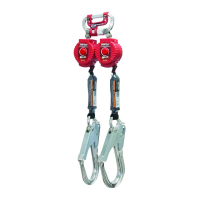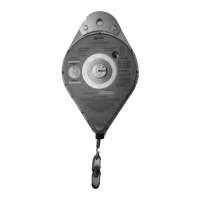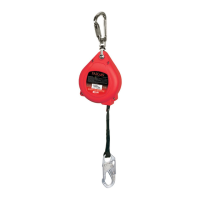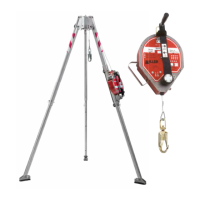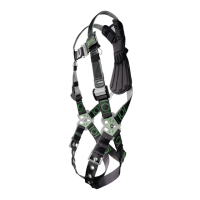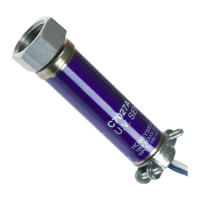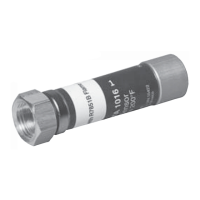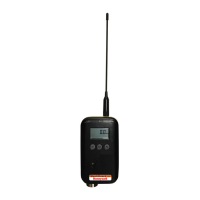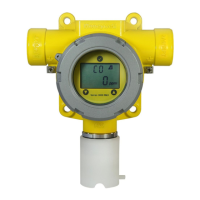EN INSTRUCTIONS FOR USE
DO NOT DISCARD READ BEFORE USE
TURBOLITE EDGE PERSONAL FALL LIMITERS OR SELFRETRACTING LIFELINES
COMPLIES WITH EN 360:2002
+ Requirements of CNB/P/11.062rev 06, CNB/P/11.060rev 08, CNB/P/11.085rev 03
1 GENERAL REMARKS
You have just bought an item of Class III Personal Protection Equipment (PPE) that protects
against life-threatening risks and we are grateful for your trust. To ensure that this product
gives complete satisfaction, BEFORE EVERY USE, please follow the instructions in this
manual.
This manual is for a self-retracting lifeline manufactured as described herein and in the list
of products referred to in Appendix 1.
This equipment is an EN 360:2002- certified fall-arrest system, i.e. a personal protective
system against free falls and limiting the force of impact on the user’s body when arrest-
ing a fall by absorbing energy (<6kN).
Personal fall limiters (or self-retracting lifelines) are self-contained retractable devices
designed to be used by personnel in applications where fall protection in combination with
unrestricted worker mobility is needed. Honeywell Miller TurboLite Edge Personal Fall Limit-
ers are specially-engineered retractable units with unique features designed for leading
edge applications.
The product conforms to Regulation (EU) 2016/425 and to EC Standard EN 360:2002 + the
requirements of CNB/P/11.062, CNB/P/11.060, CNB/P/11.085.
The TurboLite Edge Personal Fall Limiters are products made of aluminium, steel, stainless
steel, plastic and fabric materials.
1-1 LIST OF PRODUCTS CONCERNED - MODELS, SPECIFICATIONS AND
DIMENSIONS (cf. II)
1-2 CONTACT
Honeywell Fall Protection Europe SAS
Immeuble Edison - ZI Paris Nord II
33, rue des Vanesses -
BP 55288 Villepinte
95958 Roissy CDG Cedex -FRANCE
IS.PPE.TECHSUPPORT.EUROPE@honeywell.com
00 800 33 44 28 03
www.honeywellsafety.com
2 PRODUCT IDENTIFICATION (CF. I)
3 GENERAL FALL PROTECTION REQUIREMENTS
All warnings and instructions shall be provided to authorized persons/users.
Proper precautions should always be taken to remove any obstructions, debris, material, or
other recognized hazards from the work area that could cause injuries or interfere with the
operation of the system.
Always check for obstructions below the work area to make sure potential fall path is clear.
Allow adequate fall clearance below the work surface.
To minimize the potential for accidental disengagement, a competent person must ensure
system compatibility.
All equipment must be inspected before each use according to the manufacturer’s instruc-
tions. Additionally, equipment must be inspected by a competent person, other than the user,
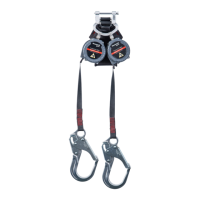
